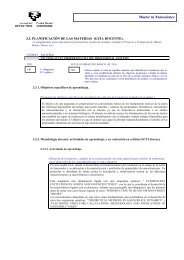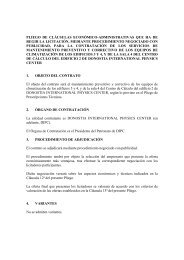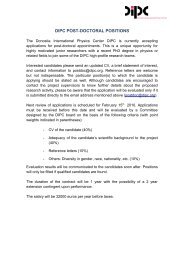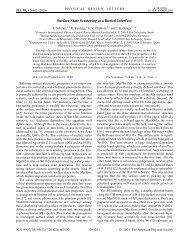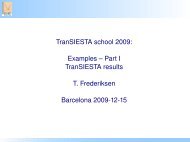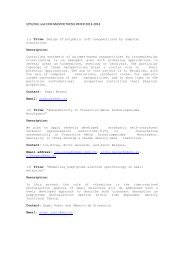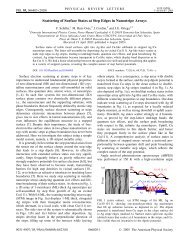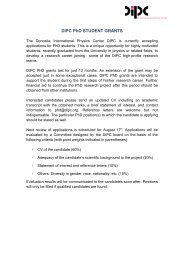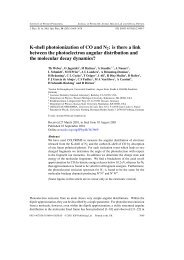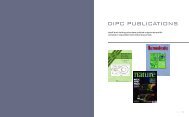Flocculation in Carbon Black Filled Rubber ... - All-electronics.de
Flocculation in Carbon Black Filled Rubber ... - All-electronics.de
Flocculation in Carbon Black Filled Rubber ... - All-electronics.de
You also want an ePaper? Increase the reach of your titles
YUMPU automatically turns print PDFs into web optimized ePapers that Google loves.
<strong>Flocculation</strong> <strong>in</strong> <strong>Carbon</strong> <strong>Black</strong> <strong>Filled</strong> <strong>Rubber</strong> Compounds<br />
about 38 mm <strong>in</strong> diameter were obta<strong>in</strong>ed.<br />
Top and bottom faces of the samples<br />
were gold sputtered to ensure good electrical<br />
contact with the electro<strong>de</strong>s and<br />
elim<strong>in</strong>ate the contact resistance. The<br />
samples were prepared us<strong>in</strong>g a wi<strong>de</strong><br />
range of elastomers rang<strong>in</strong>g from solution<br />
SBRs to Natural <strong>Rubber</strong>.<br />
Fig. 1 shows the equipment built by the<br />
authors that allows conduct<strong>in</strong>g the measurements<br />
at constant temperature.<br />
The samples were placed between chromium<br />
plated copper electro<strong>de</strong>s that are <strong>in</strong><br />
thermal contact with two heaters. The<br />
middle sample fitted with a thermocouple<br />
was used to control the temperature<br />
us<strong>in</strong>g an Omega temperature controller.<br />
The resistivity was measured us<strong>in</strong>g a<br />
Keithley Electrometer 6517A equipped<br />
with a Keithley 6522 multiplexer card<br />
that allows measurement of up to ten<br />
samples at a time. The electrometer<br />
was controlled by a personal computer<br />
through an RS232 port. More <strong>de</strong>tailed<br />
<strong>de</strong>scription of the equipment and the experimental<br />
technique can be found elsewhere<br />
[10]. The samples were placed between<br />
electro<strong>de</strong>s at room temperature<br />
and the <strong>in</strong>itial volume resistivity measurements<br />
were ma<strong>de</strong>. This first measurement<br />
is the reference po<strong>in</strong>t to calculate<br />
the extent of the resistivity change.<br />
Next, the temperature was <strong>in</strong>creased to<br />
60 8C, 80 8C, and 100 8C respectively.<br />
After the temperature reaches the set<br />
mark (at a rate of 1 8C/m<strong>in</strong>), the volume<br />
resistivity data were collected for<br />
24 hours. F<strong>in</strong>ally, the samples were<br />
cooled to room temperature (<strong>in</strong> about<br />
30 m<strong>in</strong>utes) and after another 24 hours,<br />
the f<strong>in</strong>al volume resistivity data were collected.<br />
These measurements allow calculat<strong>in</strong>g<br />
the rate of the resistivity <strong>de</strong>crease<br />
from the slope of the regression l<strong>in</strong>e fitted<br />
to the volume resistivity data vs. time. The<br />
flocculation <strong>in</strong>tensity is calculated as the<br />
or<strong>de</strong>rs of magnitu<strong>de</strong> change <strong>in</strong> the volume<br />
resistivity value between the correspond<strong>in</strong>g<br />
room temperature measurements.<br />
The <strong>de</strong>tails of temperature sequences<br />
and performed measurements<br />
are expla<strong>in</strong>ed <strong>in</strong> Figures 2a and 2b.<br />
viscosity and a the particle diameter.<br />
From this equation it can be <strong>de</strong>duced<br />
that at constant temperature, the flocculation<br />
rate is controlled by the polymer<br />
viscosity and the overall size of the aggregates<br />
(radius of gyration, R g ).<br />
Recently, Bohm and Nguyen [7] have<br />
studied the flocculation of carbon black<br />
<strong>in</strong> rubber compounds, us<strong>in</strong>g the Payne<br />
effect as evi<strong>de</strong>nce of flocculation. Also,<br />
Jager and MacQueen, [8] have used<br />
electrical measurements to analyze the<br />
k<strong>in</strong>etics of the flocculation process.<br />
They measured the electrical resistivity<br />
of EBA (ethylene butylacrylate copolymer)<br />
filled with carbon black at different load<strong>in</strong>gs<br />
and ag<strong>in</strong>g temperatures. In this paper,<br />
flocculation of the carbon black filler<br />
<strong>in</strong> uncured rubber compounds will be <strong>in</strong>vestigated.<br />
<strong>Flocculation</strong> occurs to a<br />
much larger extent <strong>in</strong> uncured compounds<br />
however this process can also<br />
be observed <strong>in</strong> cured rubber. An important<br />
dist<strong>in</strong>ction between uncured rubber<br />
compounds with and without the <strong>in</strong>corporation<br />
of curatives will be <strong>de</strong>monstrated.<br />
It was found dur<strong>in</strong>g the course<br />
of this study that a correlation between<br />
bound rubber and flocculation exist. An<br />
explanation of these phenomena will be<br />
proposed.<br />
Experimental<br />
Test Procedure ±<br />
Electrical Measurements<br />
<strong>All</strong> rubber compounds used <strong>in</strong> this study<br />
were mixed us<strong>in</strong>g a Haake Rheocord 90<br />
<strong>in</strong>ternal mixer. After mix<strong>in</strong>g, the compounds<br />
were mill sheeted to 12 mm<br />
thickness and cyl<strong>in</strong>drical samples of<br />
Fig. 1. The experimental<br />
setup for<br />
electrical measurements<br />
Test procedure ± Bound rubber<br />
The bound rubber measurement was<br />
conducted at room temperature us<strong>in</strong>g toluene<br />
as the extract<strong>in</strong>g solvent. Approximately<br />
1 gram of rubber compound was<br />
cut <strong>in</strong>to small pieces and placed <strong>in</strong>to a<br />
sta<strong>in</strong>less-steel wire-mesh cage of known<br />
weight. The cage was then immersed <strong>in</strong><br />
solvent for four days. The toluene was replaced<br />
every day with fresh solvent. After<br />
extraction, the rubber and the cage were<br />
dried <strong>in</strong> a hood for one hour and then <strong>in</strong><br />
an oven at 125 8C for another 5 hours.<br />
Percentage of the bound rubber was calculated<br />
accord<strong>in</strong>g to the follow<strong>in</strong>g equation:<br />
Bound <strong>Rubber</strong> …%† ˆ<br />
W B …m f ‡ m p † W A m f<br />
…2†<br />
W A m p<br />
where W B and W A are the mass of the<br />
compound after and before extraction,<br />
m f and m p are the mass of the filler and<br />
the polymer <strong>in</strong> the compound.<br />
Test procedure ± Low stra<strong>in</strong>,<br />
low frequency dynamic properties<br />
The dynamic measurements were performed<br />
on the ARES (Advanced Rheometrics<br />
Expansion System) system us<strong>in</strong>g<br />
the parallel plate geometry [11]. Samples<br />
were cured between alum<strong>in</strong>um plates of<br />
25 mm <strong>in</strong> diameter. Typical sample thickness<br />
was ma<strong>in</strong>ta<strong>in</strong>ed at about 2.5 mm.<br />
The test was performed at a frequency<br />
of 1 Hz and a stra<strong>in</strong> sweep from 0.1 to<br />
10%. An environmental chamber controlled<br />
the temperature at 30 8C.<br />
Test procedure ± High frequency<br />
dynamic properties<br />
The high frequency dynamic data were<br />
collected us<strong>in</strong>g the Sid Richardson <strong>Carbon</strong><br />
Co. <strong>de</strong>veloped ultrasonic spectro-<br />
KGK Kautschuk Gummi Kunststoffe 55. Jahrgang, Nr. 11/2002 597



